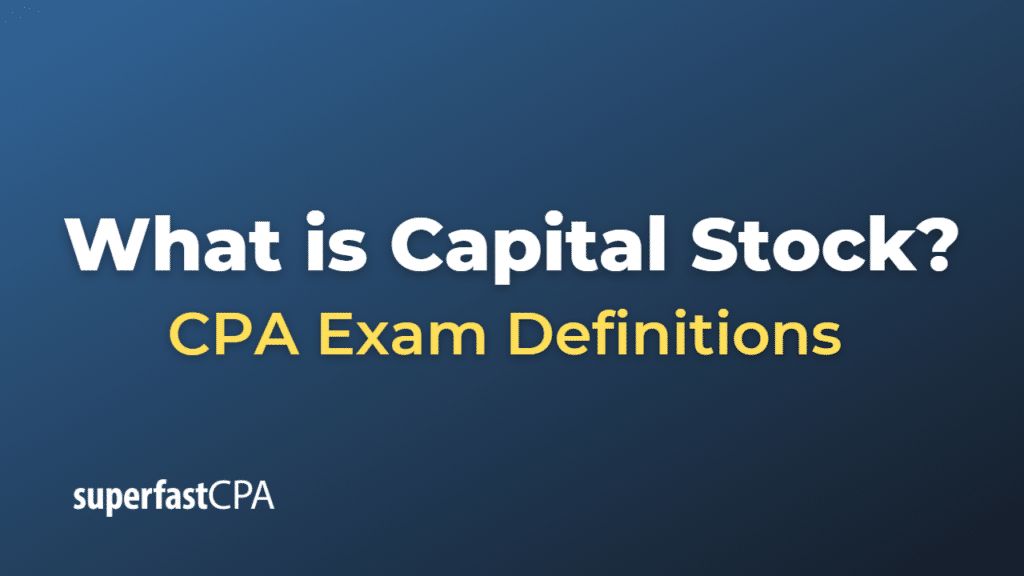Capital Stock
Capital stock refers to the total number of shares that a company has issued and authorized for sale to investors. It represents the ownership interest in the company and is a key component of a company’s equity financing. Capital stock can be divided into two main categories: common stock and preferred stock.
- Common stock: Common stock represents the basic ownership interest in a company. Common shareholders have voting rights at shareholder meetings and are entitled to receive dividends if declared by the company’s board of directors. In the event of liquidation, common shareholders have a residual claim on the company’s assets, meaning they receive their share only after all other claims, such as debt and preferred stock, have been satisfied. Common stock typically carries higher potential returns compared to preferred stock but also comes with greater risk due to its lower priority in the event of liquidation.
- Preferred stock: Preferred stock is a hybrid security that combines features of both common stock and bonds. Preferred shareholders typically do not have voting rights but enjoy a higher priority claim on the company’s assets and earnings compared to common shareholders. Preferred stock usually pays a fixed dividend, which must be paid before any dividends can be distributed to common shareholders. In the event of liquidation, preferred shareholders have a priority claim on the company’s assets, ranking above common shareholders but below debt holders.
Capital stock is an important component of a company’s balance sheet, as it represents the owner’s equity in the company. It is a key source of capital for a company, allowing it to raise funds for various purposes, such as financing growth, paying off debt, or investing in new projects. The value and composition of a company’s capital stock can provide insights into its financial health, ownership structure, and overall risk profile.
Example of Capital Stock
Let’s consider a fictional example of a company called “HealthTech Innovations Inc.” to illustrate capital stock.
HealthTech Innovations is a healthcare technology company that develops advanced medical devices for hospitals and clinics. The company was founded five years ago and has grown rapidly since then. To support its growth, HealthTech has issued shares of stock to raise capital from investors.
The company’s capital stock structure is as follows:
- Common stock: HealthTech has issued and authorized 5 million shares of common stock, with a par value of $0.01 per share. Common shareholders have voting rights at shareholder meetings and are entitled to receive dividends if declared by the company’s board of directors.
- Preferred stock: HealthTech has also issued and authorized 1 million shares of preferred stock, with a par value of $1.00 per share. Preferred shareholders do not have voting rights but enjoy a higher priority claim on the company’s assets and earnings compared to common shareholders. The preferred stock pays a fixed annual dividend of $0.05 per share.
In this example, HealthTech Innovations has a total capital stock of 6 million shares, consisting of 5 million common shares and 1 million preferred shares. The company’s capital stock represents the ownership interest in the company and is a key source of funds for its growth and development. Investors who purchase shares of HealthTech’s capital stock become part-owners of the company, sharing in its potential profits and bearing the risks associated with its business operations.













